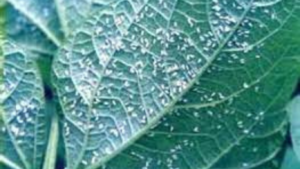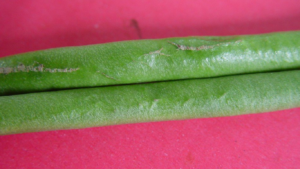French beans are a popular crop in Kenya, known for their high nutritional value and versatility in cooking. However, like any other crop, French beans are susceptible to pests and diseases that can damage the plants and reduce yields. Some of the most common pests and diseases affecting French beans in Kenya include white flies, aphids, caterpillars, bean flies, cut worms, anthracnose, thrips, and powdery mildew.
White flies are small, white insects that feed on the leaves of French beans, sucking out the plant’s sap and causing the leaves to yellow and wilt.

Aphids are small, pear-shaped insects that feed on the stems and leaves of French beans, causing stunted growth and distorted leaves.

Caterpillars are the larvae of various insects, such as moths and butterflies, that feed on the leaves and stems of French beans, causing extensive damage to the plants.

Bean flies lay their eggs on the leaves of French beans, and the larvae burrow into the stems, causing them to become stunted and brittle.
Cut worms are the larvae of various night-flying insects, such as moths and beetles, that cut the stems of young French bean plants, causing them to wilt and die.
Anthracnose is a fungal disease that affects the leaves, stems, and pods of French beans, causing brown or black lesions and premature death of the plants.

Thrips are small, slender insects that feed on the leaves and stems of French beans, causing the leaves to become distorted and discolored.

Powdery mildew is a fungal disease that affects the leaves of French beans, causing a white, powdery growth on the surface of the leaves and reduced yields.
To tackle these challenges, farmers can implement a range of pest and disease management strategies, such as using insecticides and fungicides, practicing crop rotation, and adopting good agricultural practices. For example, farmers can plant French beans in well-draining soil, avoid overwatering, and provide adequate spacing between plants to improve air circulation and reduce the risk of fungal diseases. They can also monitor their crops regularly for signs of pests and diseases and take prompt action to control the infestation.
Working with an agronomist can also be beneficial for farmers who are farming for export. An agronomist is a trained professional who specializes in the science of crop production, and can provide valuable advice and guidance on the best practices for growing French beans for export. An agronomist can help farmers identify the most suitable varieties of French beans for the local climate and soil conditions, and provide guidance on the optimal planting and harvesting times. They can also provide advice on the best pest and disease management strategies, and help farmers comply with the quality and food safety standards required for exporting fresh produce.
In conclusion, pests and diseases can pose a significant challenge for farmers growing French beans in Kenya. By implementing effective pest and disease management strategies, and working with an agronomist, farmers can improve the health and yields of their French bean crops, and ensure that they meet the quality standards required for exporting.
By Maureen Njeri.
